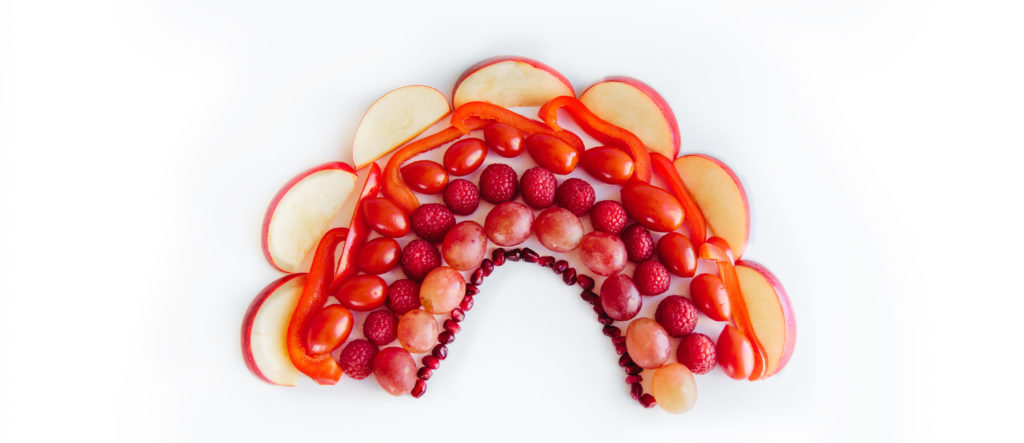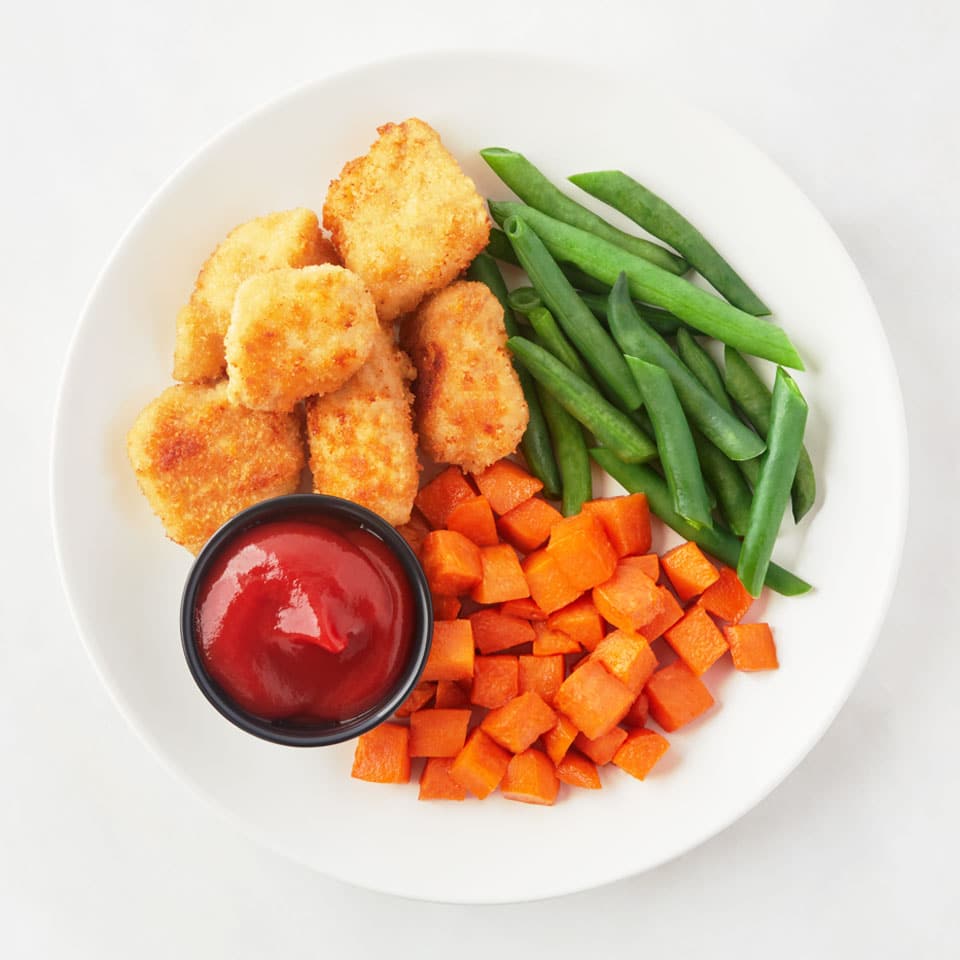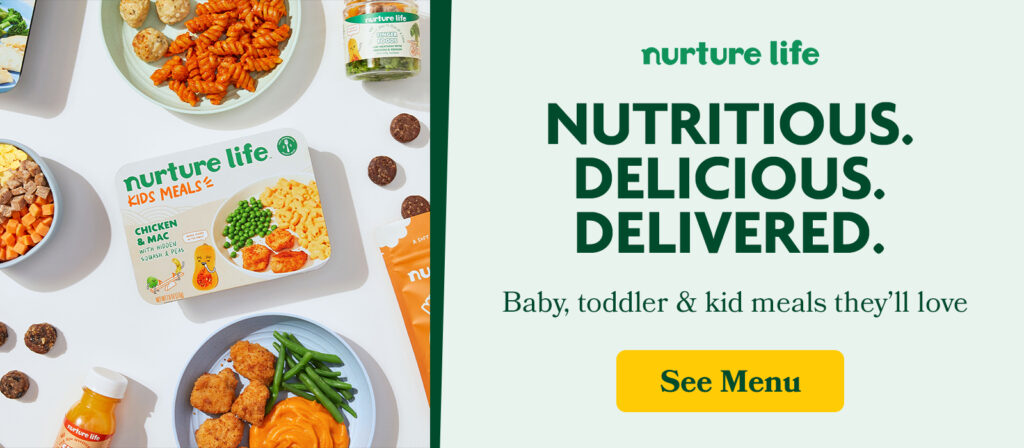11 Red Fruits and Vegetables
The color of love! We’ve rounded up 11 red fruits and veggies that are so rich in nutrients, they have us simply smitten. Try dishing these up for your kids as part of a meal or as a nutritious snack.
11 Red Fruits and Vegetables to Add to Your Family’s Diet
1. Red bell peppers
With more than twice the vitamin C of an orange, this vibrant, red veggie gives the immune system a boost and also aids in healing wounds. Its sweeter taste makes it more approachable to your little ones and can be a great addition to a toddler-friendly veggie platter. If you’re struggling to find ways to get your kids to eat their veggies, consider tasty, vitamin-dense bell peppers.
2. Cherries
Sweet and juicy, cherries are full of antioxidants and high in fiber, too. Your kids can enjoy them on top of granola or whole grain cereal, as part of a well-balanced lunch or as a fun afternoon snack. Frozen cherries offer the same nutritional benefits as their fresh counterparts, so keep these in your freezer for a smoothie addition or a frozen treat.
3. Watermelon
This summertime favorite is rich in vitamin A, which supports eye health, and vitamin C, important for the immune system. One of the best things about watermelon? Its water content helps keep active kids hydrated by replenishing fluid levels. You can make a lot of easy watermelon treats with your little one, such as a tasty sorbet with no added sugar or watermelon lemonade.

4. Strawberries
These red gems are small but mighty—they’re the greatest source of vitamin C of all fruit and pretty low in calories at about 50 calories per 8 berries. Like cherries and apples, strawberries are great on their own as a snack or dessert and can also easily be incorporated into baked goods and treats.
5. Tomatoes
Cook up a hearty tomato sauce or pop some cherry tomatoes into a container for snack time, and your little one can reap the benefits of lycopene, a naturally occurring red pigment. Foods with lycopene are reported to affect diseases such as cancer and heart disease thanks to their powerful antioxidants.
6. Pomegranates
This fun tropical fruit is brimming with antioxidants that keep your body healthy. Specifically, antioxidants fight against free radicals, which are unstable molecules that cause damage to cells, proteins and DNA. Pomegranates can also help satisfy your kid’s sweet tooth without added sugar, too!
7. Red apples
There’s a reason an apple a day keeps the doctor away! The perfectly portable snack, a red apple is a good source of potassium, vitamin A and fiber—especially in the skin. For your little one with the big sweet tooth, try baking the apples with a little cinnamon and sugar.
Red produce offers unique vitamins and antioxidants, as well as a kick of color, to any meal. These naturally sweet fruits and veggies can be a great part of your kid’s nutritional daily diet. Enjoy them on Valentine’s Day, the 4th of July or every day with your little ones!
8. Beets
While beets are not always the most popular of foods to cook on a regular basis, the health benefits of beets definitely warrant a try. Beets have anti-inflammatory properties, are great for brain health, and are low in calories.
You might be surprised at the number of delicious recipes there are that incorporate beets! Some kid-friendly favorites include beet hummus or kid-friendly pink beet pancakes.
9. Cranberries
Cranberries aren’t just the bitter fruit that gets added to different fruit juices (usually with tons of sugar added), but also a solid option for a healthy ingredient to add to your child’s diet. Cranberries are considered a superfood, thanks to their high nutrient and antioxidant content. They also strengthen the immune system, help to regulate blood pressure, and lowers the risks of urinary tract infections.
Adding cranberries to pancakes, bagel spreads, or smoothies are great ways to incorporate this awesome red fruit into your household diets.
10. Raspberries
Aside from being absolutely delicious on their own, making a wonderful mid-day snack, they should also be considered because of their amazing health benefits. Raspberries are high in vitamins and minerals, as well as fiber, and help to protect against diabetes, arthritis, cancer, and obesity.
The good news is that it’s easy to find ways to add raspberries to a diet. Raspberries make amazing salad toppers, are perfect in that regular smoothie you make, and can even be added to your baking for a fruity twist.
11. Red Potatoes
Like all potatoes, much of a red potato’s nutritional value comes from its skin. Red potatoes are particularly nutrient-rich, and are loaded with iron, potassium, B vitamins, and fiber. Unlike larger russet potatoes, red potatoes are easy to keep the skin and still have extremely delicious sides to go along with your entrees.
Red potatoes can be mashed whole into a delicious mashed potato recipe, but can be just as good (if not better) roasted in the oven with some olive oil, a pinch of salt, and maybe a few healthy spices.
- Try it from Nurture Life: Breakfast Sandwich with Roasted Potato Medley
- Try it from Nurture Life: Pot Roast with Mashed Potatoes
Balance Your Red Fruits and Vegetables with Other Colors

It has definitely been proven that red fruits and vegetables have amazing health benefits. But in your hunt for red fruits and red veggies, don’t forget about the other colors.
Look for Deeper, Darker Colors
Deep, dark colors are more important than the hue, and you can have a healthy diet with green, orange, yellow, blue, and purple foods. While it’s not easy to eat a handful of rich fruits and veggies each day without making dietary changes, you don’t have to limit yourself to just one or two colors. A balanced diet is the cornerstone of modern-day nutrition, and there are many colors and foods that can help you improve your eating habits.
For example, here are some color-rich meals you can get delivered to your door from Nurture Life:
- Chicken Bites with Green Beans & Roasted Sweet Potatoes
- Chicken Meatballs with Pasta & Vegetables
- Salmon Slider with Rainbow Carrots & Green Beans
When Possible, Try to Use the Real Thing
Real foods are also much better than supplements of the same stuff, and health officials the world over recommend eating your nutrients instead of popping pills for the same benefits. Not only are the nutritional benefits not equivalent, but you could be wasting your money when it comes to overpriced pills that you end up flushing down the drain.
There is No “One-Size-Fits-All”
Furthermore, red fruits, red veggies and all the other naturally colored foods can’t just be boiled down to one ingredient, no matter how much press it gets. In fact, it’s the combination of everything in the foods you eat that gives you the balanced nutrition you’re looking for, and supplementing just one ingredient misses the bigger picture.
That said, you could do much worse than eating red fruits and red veggies, so if a certain color is calling to you or your child, or you want to mix things up every other week or month, go for it and make it an activity for you and your kids. It could also end up being a great way to identify other foods that your kids will eat, and the focus on colors is a boon to any parent that’s trying to bring their picky eater out of their shell — great foods definitely aren’t beige. By challenging your kids with new foods, you’ll be readying them for a lifetime of good, healthy eating.
Improve Your Nutrition with Red Fruits and Vegetables
While an apple a day might not keep the doctor away, it does make for a yummy snack that’s also good for your child, and there’s a whole world of delicious red fruits and red veggies, as well as other foods that look like every color of the rainbow, out there. Don’t settle for another night of boxed or bagged foods. By keeping your fridge and pantry stocked with real fruits and veggies, you’ll end up making more healthy meals and providing more opportunities for your kids to eat right.
However, we understand that not everyone has the time to become a full-time chef for your kids. It’s just easier to buy prepackaged stuff and dole it out for snacks and meals — but it doesn’t have to be this way.
With Nurture Life’s kids meal delivery service, we make delicious and nutritious meals that are specially formulated for the tastes and dietary needs of children. This saves you tons of shopping and cooking time, which you can put to better use by spending more time doing activities and fun stuff with your kids. Once they start to develop a taste for foods that are actually good for them, you’ll be able to be more adventurous in your cooking and other mealtime activities.
Learn more about how our healthy meal delivery services work.


